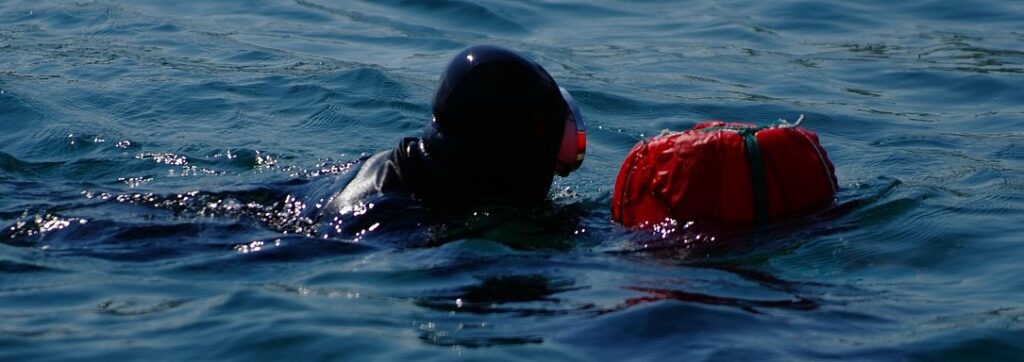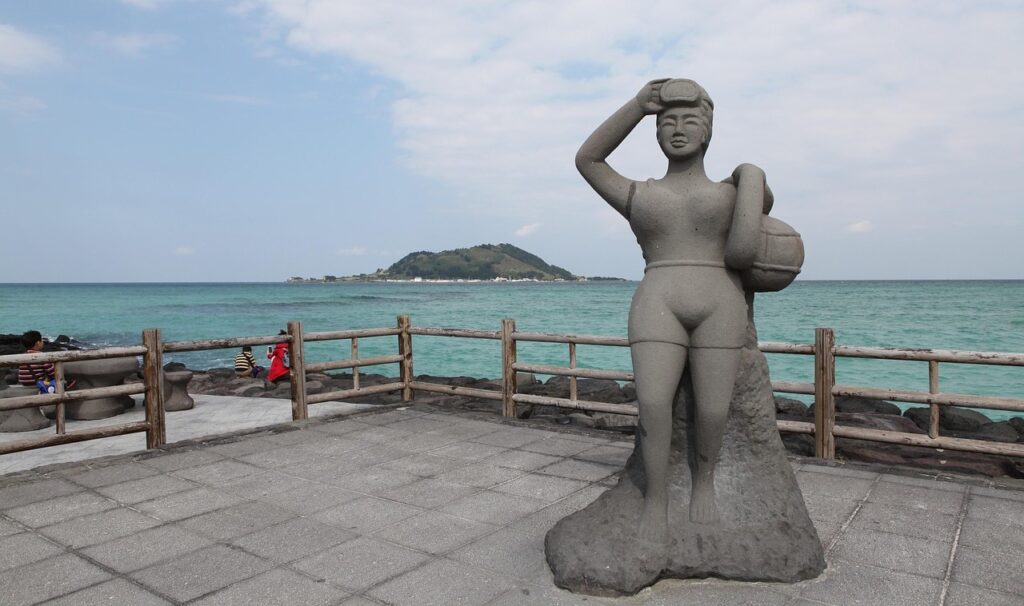Introduction: The Rise of Haenyeo in Global Media
The recent global success of the Netflix K-drama When Life Gives You Tangerines (Korean title: 폭싹 속았수다) has spotlighted Korea’s unique cultural heritage. From the very first episodes, the show features Jeju Haenyeo, traditional female divers of Jeju Island. These women, known for their resilience and deep connection to the sea, have long been central to the island’s culture.
Adding to the spotlight, the JTBC–BBC Studios co-produced documentary Deep Dive Korea: Song Ji-hyo’s Haenyeo Adventure aired recently, offering viewers an in-depth look at the lives and traditions of these remarkable women. Song Ji-hyo’s journey to understand the hardships and strength of Haenyeo women deeply resonated with audiences both in Korea and abroad.
What Does “Haenyeo” Mean?
The term Haenyeo (해녀) literally translates to “sea women” and refers to female free divers who harvest seafood such as abalone, sea urchins, and seaweed without oxygen tanks. While the term became widespread during the Japanese colonial period (early 20th century), regional terms still exist:
- In Jeju: 잠녀 (Jamnyeo), 잠수 (Jamsu)
- In southern coastal areas: 무레꾼 (Murekkun)
- In Busan (1960s): 통쟁이 (Tongjaengi), named for the wooden tubs used instead of the traditional “tewak” float
Interestingly, similar free-diving traditions can be seen in Japan among the Ama (海女) divers, but Korea—especially Jeju—has the highest concentration of professional female divers in the world.

The Global Uniqueness of Korea’s Women Divers
While diving for marine resources is practiced worldwide, free-diving for subsistence without any breathing equipment is a cultural phenomenon mostly unique to Korea and Japan. Although similar practices exist in Southeast Asia and parts of Russia, Jeju Island is especially notable for its dense population of Haenyeo.
Historically, Jeju Haenyeo did not limit themselves to local waters. In search of better fishing grounds, they traveled to Korea’s mainland and even abroad—reaching as far as:
- East Sea regions like Gangwon and North Gyeongsang
- Remote islands like Ulleungdo and Heuksando
- International locations such as Vladivostok (Russia), Dalian and Qingdao (China), and various parts of Japan
These seasonal migrations, known as “Chulga” (출가), were common from the late 19th century onward.
Haenyeo in Historical Records
Haenyeo are among Korea’s most ancient professions. Records of female divers appear in:
- Samguk Sagi (Chronicles of the Three Kingdoms) – mentions Haenyeo in the Goguryeo period.
- Goryeo Dynasty (1105) – a royal edict banned nude diving by Haenyeo.
- Joseon Dynasty – further restrictions on men and women working together in the sea.
Historical documents also reference Hae-nam (male divers), who were often tasked with gathering abalone, especially as tributes to the royal court. As tribute quotas rose, restrictions like the “No-Departure Law” (출륙금지령) were enforced for over 200 years to prevent laborers from fleeing Jeju.
Tools and Techniques of the Haenyeo
Despite the harsh environment, Haenyeo dive year-round using minimal equipment. Their traditional gear includes:
- Tewak (float) – a buoy to rest and hold the day’s catch
- Mangseori (net bag) – attached under the tewak for collecting sea creatures
- Bitchang (prying tool) – for harvesting abalone or sea urchins
- Jeongge-homi (seaweed sickle) – for cutting seaweed
- Galggori (hook) – for gathering shellfish
- Sosal (spear) – for catching fish
- Mulot (diving suit) – once cotton, now mostly rubber wetsuits
- Nunsse (goggles) – from “Jokse-nun” (small) to “Wang-nun” (large goggles used since the 1950s)
The Haenyeo Community and Cultural Tradition
Becoming a Haenyeo is not about status—it is about endurance and apprenticeship. Jeju girls start training in shallow waters called “Aegibadang” (baby sea) around age 7 or 8. They gradually progress through stages:
- Teenage years (12–18) – deeper diving and learning from elders
- 20s–40s – peak diving years
- 60s–70s – many continue diving well into old age
Haenyeo are ranked by skill:
- Sanggun (상군) – elite divers, leaders of the community
- Junggun (중군) – intermediate divers
- Hagun (하군) – beginners or less experienced
The Haenyeo not only pass down diving skills, but also communal values, environmental wisdom, and spiritual beliefs.
UNESCO Intangible Cultural Heritage: Haenyeo Culture
Haenyeo culture reflects Korea’s traditional marine life, sustainable harvesting practices, and female-centered community life. The Haenyeo’s fishing method—called “muljil” (물질)—represents ecological knowledge, mutual aid, and unique rituals like:
- Jamsugut (잠수굿) – shamanistic prayers for safety and good harvests
- Haenyeo Songs – sung during boat rides
- Oral traditions and female lineage – skills passed from mothers to daughters
In recognition of these cultural values, Jeju Haenyeo Culture was added to the UNESCO Intangible Cultural Heritage of Humanity list in 2016, as Korea’s 19th entry.

Preserving and Promoting Haenyeo Heritage
Despite their global recognition, the Haenyeo population is aging, and their numbers are declining due to climate change, declining marine resources, and challenging work conditions. That’s why international exposure—through media like:
- Netflix’s When Life Gives You Tangerines
- JTBC/BBC’s Deep Dive Korea
—is crucial in preserving this living cultural heritage.
Conclusion: A Legacy to Be Shared with the World
The Jeju Haenyeo are not just divers—they are storytellers, community leaders, and symbols of harmony between humans and nature. As global awareness of their culture grows, so does the hope that future generations—both in Korea and beyond—will continue to learn from their wisdom.
The culture of Jeju Haenyeo is more than heritage; it is a way of life rooted in resilience, sustainability, and the strength of women.